Be a plant P.I. (very long post)
Be a Plant P.I.size>color>
I have been intimately involved in many forms of container gardening and in other plant-related pastimes for more years than I usually care to admit. Fortunately, as the years mount I have also grown increasingly proficient at being able to maintain increasing levels of vitality in the plants I tend, and at helping others do the same. As you might expect, I attribute a large part of that to both my continuing studies and accumulation of practical experience, but I also feel the systematic way I deal with plants that are showing symptoms of stress or steady decline is one that you might find to be of value. When I initially share the framework, it is entirely possible you may think it too simplistic, but after I flesh it out a little, I hope you will discover you have been left with another way of looking at plants that becomes as useful a tool to you as I have found it to be.
Sick plants are stressed plants. Stress is a condition that can be caused by interference in the plants ability to manage or allocate energy in the manner it normally would, or by the plant operating at or near its genetically programmed limits. Stress is reversible, but if unchecked will lead to strain, a much more serious condition. Strain causes injury and is not a reversible condition.
You may notice in this and other writings, my regular use of the term ÂvitalityÂ. It is actually a plantÂs vitality that we can hold sway over, not its vigor. ÂVigor is constant. Mother Nature provides every plant its own, predetermined level of vigor by building it into each plant. Vigor is the genetic potential every plant is encoded with, and its measure is the plant's ability to resist stress and strain. Vitality, in contrast, is variable - a dynamic condition that is the measure of a plant's ability to cope with the hand it's dealt, culturally speaking. A good way to look at the difference between vigor and vitality is to look to genetics for the level of vigor and to things cultural for the plantÂs vitality. It's up to us to provide the cultural conditions that will ensure our plants' vitality. Vigor and vitality are distinctly different, and a good case could be made that they are unrelated, but there is no need to delve deeper into that point. A plant can be very vigorous and still be dying because of poor vitality. Far more often than not the term 'vigor' or 'vigorous' is misapplied, where in their stead the terms 'vital' or 'vitality' would have been more appropriate. Poor vitality is what we witness when our plants are growing under stress or strain and in decline.
I would like to take a moment to express my appreciation to the late Dr. Alex Shigo for his works, which have helped distill my understanding of stress, as opposed to strain, and vitality as opposed to vigor.
When you first realize you have a containerized plant that is struggling, itÂs important to determine the cause. You should also realize that it is very unusual for plants in decline to reverse course without your intervention - without you acting to correct the cause(s) responsible for the condition.
You will remember my mentioning in the introductory paragraph that you might think my approach to determining the underlying causes of various plant problems AND the solution too simplistic? Let me give you an example of WHY I said that:
If you came to me and with a sick plant and began to tell me about it, the conversation COULD go something like this.
"Al, I have a sick plant, and ÂÂÂÂÂ" (I might interrupt here - sorry for the interruption)
"ItÂs the soil"
"Huh?"
"ItÂs the soil Â"
And I would be right about 90% of the time. I could increase the accuracy of my diagnosis at least another 5% if I listen to the rest of what you had to say, but the message I want to bring to you is that >90% of the problems I see in other peoples containerized plants are caused directly by the growerÂs choice of soil, or can be traced indirectly to that choice.
What I am about to offer for your consideration is the idea that if we can eliminate light issues as the source of decline in our containerized plants, the odds overwhelmingly favor the soil we chose, as the direct source of the problem, or, as the indirect source because of other negative effects come into being as a result of the decline in vitality and decreased resistance caused by a poor soil. If there is any serious argument to be mounted against this writing, it should focus on the premise contained within this paragraph.
Because IÂm stating the odds favor your plantÂs reduction in vitality as being caused by a poor soil, I should list one important condition and some other possible causes of stress or decline not soil-related so you can systematically eliminate the possible causes other than those soil-related before we move forward.
If your plant is in steady decline, itÂs important to first eliminate the possibility that the decline is being caused by chronic insufficient light levels. The most obvious symptoms are long internodes and weak stems. The obvious corrective measure is to move the plant to a position where it receives greater photo-intensity, longer photo-exposure, or both. I donÂt consider abscising (shedding) leaves to necessarily be a symptom of steady decline, as this condition can be caused by a sudden cultural changes, but it certainly can be soil related.
Being extremely root-bound is an issue quasi-related to soils but not an issue directly related to the quality of the soil. It will appear later in a list as something to be considered as causal of stress and decline, and something to be remedied. As the second step in our process of elimination, we need to be able to discount tight roots as a source of decline.
Nutritional deficiencies or toxicities need to be eliminated as possible sources of decline. Over-fertilizing is a logical source of toxicities and soluble salts levels, but IÂm going to make the case that an appropriate soil and a considered nutritional supplementation program should virtually eliminate nutritional issues, which again brings us full circle to soil choice as a major player in toxicity issues and a distinctly possible player in deficiency issues. I make mention of the fact that soil conditions can induce nutrient deficiencies even when adequate levels of certain nutrients are present in the soils because poor soils impair root function and metabolism, making nutrients unavailable, even when present.
You also need to eliminate chronic over-watering as possibly causal of steady decline, though we shall see in a moment that over-watering is most often directly related to soil choice.
When there are symptoms of insects or disease, they need to be identified and treated appropriately with the least noxious remedy that will reduce their populations to acceptable levels; and diseases with the least noxious remedy that will get the job done. Insect and disease identification are beyond the scope of this writing, but a case will be made that your soil choice is extremely important in reducing or eliminating the incidence of diseases and infestations.
Let us take a moment to consider the cultural effects of growing in a poor soil as opposed to a good soil. While soils can be considered Âpoor for a variety of reasons, like not holding enough water, or containing phytotoxic (poison to plants) ingredients, most of soils we consider ÂpoorÂ, are those so water-retentive they support varying amounts of perched water. Perched water is the water that occupies the lower reaches of the container and will not drain by the force of gravity alone. Roots deprived of oxygen begin to die very quickly, and the roots first affected are the workhorses - the very finest roots that absorb water and the nutrients dissolved in water. These roots have to go through a process of regeneration, which is expensive to the plant in terms of energy outlay. The cycle of death and regeneration that occurs every time we water heavy (water-retentive) soils saps the plantÂs stored energy reserves, which the plant would have allocated to blooms, fruit, or an increase in the plantÂs overall mass. In other words, this stresses the plant. Most commercially prepared peat-based soils are actually very water-retentive, fresh out of the bag, and grow increasingly water-retentive over time as soil particles break down into smaller size. Particle size is the factor that determines the soils degree of excess water retention
When using poor, water-retentive soils, we automatically find ourselves on the horns of a dilemma. On one side, if we water appropriately so at least 10-15% of the total volume of water applied escapes through the drain hole and flows away from the soil, carrying accumulating soluble salts with it, we run the risk of soils remaining saturated so long that roots begin to rot, a major source of soil-related decline. The other horn of the dilemma is the net effect of the decision to water in sips to avoid the saturated conditions that promote root rot. The habit of watering in sips allows no water to escape through the drain hole, so ALL the salts from both fertilizer solutions and the soluble salts in our tap water accumulate in the soil. The net effect of this accumulation of salts is to make it increasingly difficult for plants to absorb water, and, the nutrients dissolved in that water. When soluble salt levels in the soil solution get high enough, they can actually pull water OUT of plant cells via the very same process by which curing salt pulls water from the cells of ham and bacon. Osmosis is the diffusion of water through cells semi-permeable membrane, and the process by which plant cells absorb water. When salt levels get too high, a process you might think of as reverse osmosis occurs. The process actually has a technical name - plasmolysis - but we commonly refer to it simply as fertilizer burn. Here, high levels of salts Âpulls water from plant cells, tearing plasma from cell walls and killing the cells and the tissue formed by cells, thus the term ÂplasmolysisÂ. This is an extremely significant and very common cause of severe stress and decline in houseplants and other long term plantings being grown in poor soils - especially during the winter months. The effects are generally found to be most adverse in houseplants and other long term container plantings where the condition is more likely to reach chronic levels with time.
We can see that poor soils induce stress and cause decline on multiple fronts by impairing root function and metabolism, which in turn significantly affects growth rates, development, appearance, yields and bloom profusion, to mention a few. Unseen is its effect on the plantÂs ability to fend off insects and diseases.
Plants mount a number of genetically encoded responses to the wounding of insects or the chemical signals released by disease, ALL of which require energy allocation. In plant cells, there are genes that control proteins functioning in actual defense, sending defense signals/ chemical messengers, altering metabolism, controlling cellular maintenance, regulating photosynthesis, - and many more genes of unknown function. In short, plant energy reallocation is prioritized in the plant's own defense, while other things, like every day metabolism and photosynthesis are put on the back burner. The higher the plantÂs level of energy (the greater it's vitality) and the faster its metabolism - the faster the response and greater the amount of energy and defensive bio-compounds the plant can mobilize and devote to its own defense.
When wounding occurs (insect attack) there is a "wound response" that occurs both at the site of injury as well as distally (in other plant parts away from the wound). Plants can even differentiate between the wounds of a pin and those of insects, and they react in different fashion to the "attack". Without getting more technical, the plant produces various anti-feedants, anti-metabolites, and toxins that make the insects feel rather unwelcome - as long as the plant is in good vitality or has high energy reserves - in other words, as long as the plant is in good health. The speed with which the response occurs, and the effectiveness of the defense response are also both energy driven, so it should be no surprise that plants grown indoors under stress are highly susceptible to a variety of insect marauders and various diseases.
If you want to keep the bugs away - it goes without saying that your first line of defense should not be to reach for a systemic or other harsh poison, but to keep your plants growing with as much vitality as possible as a preventive measure, which is a cultural - not a chemical thing. It is important to remember that most of the problems we find in houseplants involving disease and insect attacks can usually be linked to the reduced vitality and lower metabolism rates resultant of soil-related issues.
In summary
I think I have built an excellent case around poor soils as the major player and source of an extremely high percentage of the stress issues we encounter with our houseplants. IÂll enumerate the steps I take when I evaluate someoneÂs container plant and what remedial action I usually take.
1) Determine the problem is not light related.
2) Determine the plants are not exposed to excessive heat or cold.
3) Determine the plant is not excessively root-bound. If so, correct at the appropriate time. Plants should be repotted as soon as possible after the root mass has become cohesive (sticks together w/o crumbling) when the plant is lifted from the pot. Allowing it to remain root-bound once it has reached this point affects growth potential. Allowing a plant to become severely root-bound will permanently affect growth, no matter how large a container you bump it up to later - unless you actually correct the root-bound condition by pruning roots, which will restore the plants ability to grow as close as possible to its genetic potential within the limits of other cultural conditions. (Thanks in part to Dr. Carl Whitcomb for some of the information on root-bound conditions.)
4) Determine if there is an insect infestation. If so, identify the pest and treat with the least noxious treatment that will bring populations to an acceptable level. Keep in mind that it is likely the infestation likely occurred because of compromised defenses due to stress. Suspect a soil related problem and low vitality as the underlying cause.
5) Determine if there is a disease issue. If so, identify and treat using the same guidelines offered for insect infestations. Suspect a soil-related problem as the underlying cause.
6) Determine if there appear to be a nutritional issue - either a deficiency or toxicity. This is probably the most difficult challenge a Plant P.I. faces because nutritional issues can be difficult to identify and treat. Poor soils can compound the problem and hamper treatment. I will say that not only are individual deficiencies difficult to diagnose and treat without sophisticated testing or unless you have good diagnostic skills, but trying to add singular elements to correct deficiencies can lead to unforeseen problems like antagonistic deficiencies and actually cause more problems than they remedy. A sound and regular nutritional supplementation program that supplies all the essential elements in a favorable NPK ratio AND in a ratio to each other that is favorable is best.
7) Determine humidity levels are appropriate. Keep in mind that most problems blamed on low humidity actually originate in the problem of high soluble salt levels in the soil. We already learned that these high salt levels inhibit water uptake. Low humidity levels are usually only a secondary cause of necrotic leaf tips and margins. Suspect equally, water-retentive soils that impair the plants ability to move water to distal parts, and, individually or in combination with water-retentive soils, a high level of soluble salts as the actual cause. Only then, look to low humidity simply as a contributor to the problem.
When poor soils are directly or indirectly responsible for any one of a number of reasons for stress and decline, it is not unreasonable to suspect that treating the symptoms might be of some help for the short term, but as a long term fix will more likely be shown to be an exercise in futility. The most logical course of action is to treat the symptoms as soon as discovered to minimize their affect and slow the decline as much as possible, then replace the soil with something more suitable as soon as timing is appropriate.
I hope I have effectively illustrated the benefits of growing in soils that are durable and that promise to retain their structure, thus ensuring appropriate aeration and drainage for the expected duration of the planting, or for the interval between full repots (as opposed to simply potting-up). Virtually every issue raised, with the exception of the effects of too little light, can be directly or indirectly associated with soil choice, while none of the issues can be said to be even close to commonly associated with high quality, durable soils that remain well-aerated.
Learning how to determine what a quality soil is and how to use it effectively, or how to make a quality soil from what is commonly available, is a (if not the) key factor in determining your effort:reward quotient and how successful you will ultimately become as a container gardener.
Al




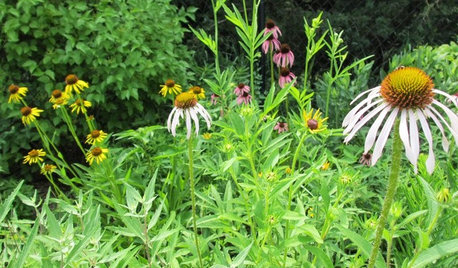
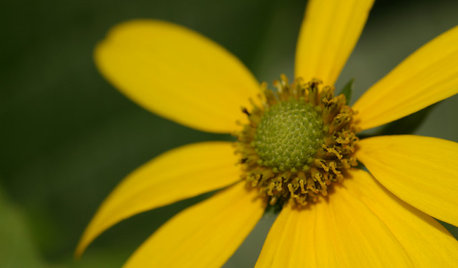
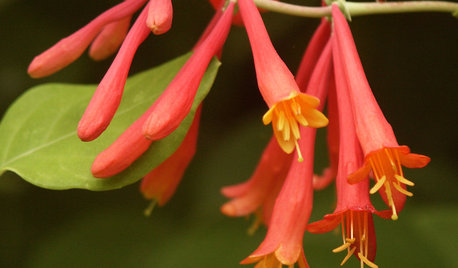

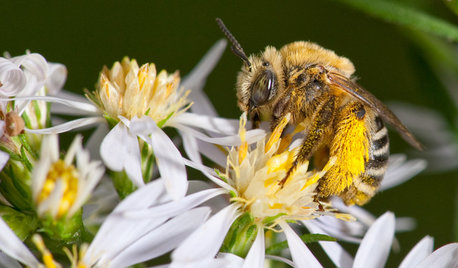
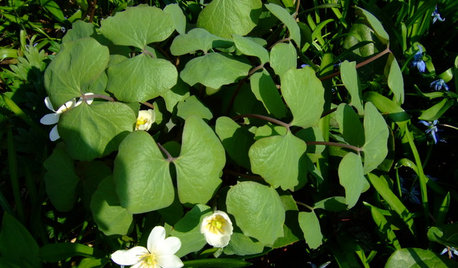






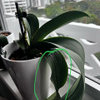


terpguy
greenman28 NorCal 7b/8a
Related Professionals
Comstock Park Landscape Architects & Landscape Designers · Ballwin Landscape Architects & Landscape Designers · Hershey Landscape Architects & Landscape Designers · Summit Landscape Architects & Landscape Designers · Bainbridge Island Landscape Contractors · Blue Springs Landscape Contractors · Bowie Landscape Contractors · Braintree Landscape Contractors · Deerfield Landscape Contractors · Gloucester Landscape Contractors · Live Oak Landscape Contractors · Stony Brook Landscape Contractors · Streamwood Landscape Contractors · Vineyard Landscape Contractors · Little Egg Harbor Twp Interior Designers & Decoratorsmeyermike_1micha
tapla (mid-Michigan, USDA z5b-6a)Original Author
puglvr1
terpguy
greenman28 NorCal 7b/8a
meyermike_1micha
greenman28 NorCal 7b/8a
tapla (mid-Michigan, USDA z5b-6a)Original Author
jodik_gw
meyermike_1micha
meyermike_1micha
meyermike_1micha
jane__ny
Pat z6 MI
meyermike_1micha
tapla (mid-Michigan, USDA z5b-6a)Original Author
meyermike_1micha
meyermike_1micha
pirate_girl
meyermike_1micha
houseplantlover
tapla (mid-Michigan, USDA z5b-6a)Original Author